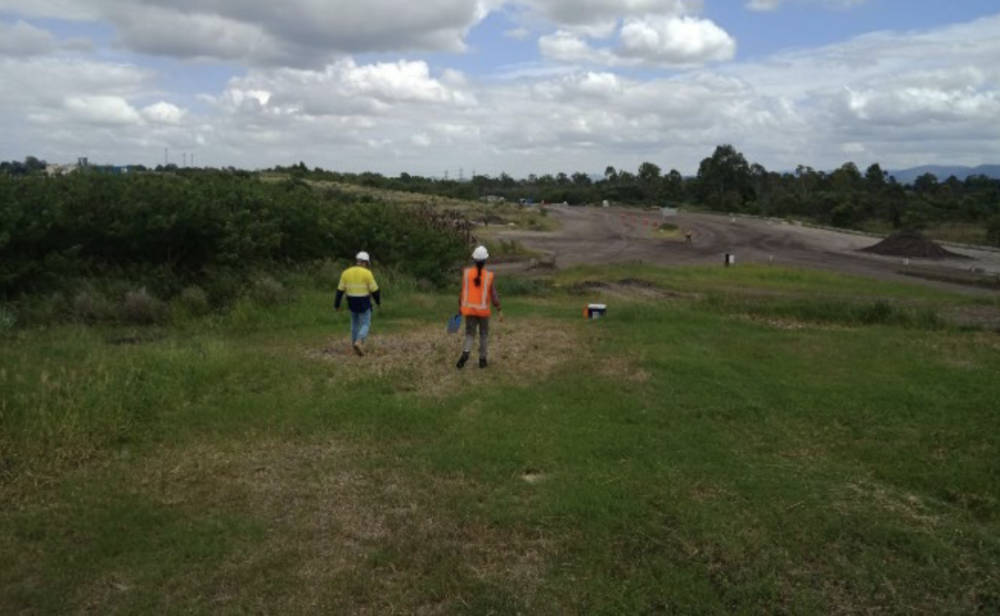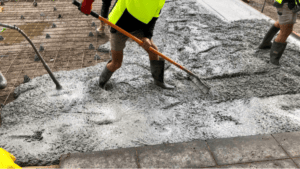This company is ready to take its landfill methane reduction tech to key field validation trial

Zeotech’s field validation trial could unlock the route to commercial adoption of its zeolite products for the reduction of methane emissions from landfills. Pic via Getty Images.
- Zeotech to carry out field validation at a Cleanaway landfill site, for its zeoteCH4 products to reduce methane emissions
- Two selected products have achieved greater than 70% methane oxidation rates
- New configurations have shown greater than 90% oxidation rates
While much is made of carbon emissions – and for good reason given that it is the single largest contributor to global warming – crafting a solution to reduce greenhouse gas emissions will also need to take methane into account.
While methane has a far shorter atmospheric life than CO2, it is also a far more potent greenhouse gas than its counterpart and accounts for about 16% of global emissions according to US Environmental Protection Agency.
This has been recognised by Australia with Climate Change and Energy Minister Chris Bowen making a non-binding pledge in October 2023 to reduce our methane emissions by 30% by 2030.
One notable and hard to abate contributor to methane emissions is landfills, which collectively account for ~30% of Australia’s methane emissions.
The ability to significantly reduce methane emissions from landfills will also serve to bring Australia much closer towards achieving net zero emissions.
Emerging mineral processing technology company Zeotech (ASX:ZEO) is eagerly exploring the potential of using zeolites – manufactured porous mineral frameworks composed mainly of aluminium, silicon, and oxygen – to address the challenge of landfill methane.
Zeolites – also known as molecular sieves – can trap, exchange, or release ions and molecules, enabling zeolites to find applications in diverse industrial and environmental contexts.
In November last year, trials carried out in conjunction with Griffith University into the use of zeolites in a layer capping landfills to control emissions proved successful with batch experiments displaying early methane oxidation efficiency of up to 70-80%.
Additionally, methane oxidising bacteria (methanotrophs) were found to actively colonise and co-exist with the company’s products, contributing further to the overall effectiveness of ZEO’s zeoteCH4 product as a practical methane abatement technology.
Proceeding to infield validation
To follow-up on the successful trials, ZEO has now moved to carry out an infield validation trial of its zeoteCH4 zeolites at one of Cleanaway Waste Management’s landfills.
The company noted that two of its products made using kaolin sourced from its Toondoon project in Queensland and a coal combustion by-product from a southeast Queensland generator utilising a patent-pending process, had shown constant high oxidation rates over a three-month period of greater than 70% following initial inoculation.
As a result, these two products will be taken forward into field validation where they will act as effective host sites for methanotroph communities, alongside maintaining constant high levels of oxidation for a prolonged period with minimal intervention following inoculation.
Already, testing on new configurations that are more closely aligned to the intended infield design has shown oxidation rates exceeding 90%, which highlights the potential to enhance constant oxidation rates as the technology is optimised during the field validation stage.
The use of the coal combustion by-product manufactured using ZEO’s patent pending processing has the potential to offer a circular solution for substantial quantities of coal combustion by-products, alongside contributing to greenhouse gas mitigation.
“Our most recent work has delivered robust constant methane oxidation efficiencies and strong methanotroph zeolite acclimatisation. The expansion of Activity B enabled more extensive and in-depth trials, which ultimately achieved the outcomes required to move forward with infield trials at Cleanaway’s landfill site,” Griffith University school of environment and science, Australian Rivers Institute senior lecturer Dr Chris Pratt said.
“We remain excited to be working on such a valuable project which could potentially contribute to Australia’s pledge to reduce methane emissions by 30% by 2030.”
ZEO chief executive officer Scott Burkhart said the company was excited to be transitioning from the lab into field trials to further validate its solution and unlock the commercial potential of its methane control technology.
“Zeotech would like to thank Dr Chris Pratt and his team at Griffith University for their ongoing focus and dedication, which was required to achieve the results needed to advance to infield trials,” he added.
“We also thank Dr Taku Ide and the team at Cleanaway for their ongoing collaboration and support to facilitate the infield trials at their landfill site.”

Griffith and Cleanaway team members undertaking program trial cell selection site at Cleanaway’s landfill. Pic supplied (ZEO)
Looking to the future
ZEO will now focus its activities on developing and evaluating scalable configurations for its two zeoteCH4 products.
Once this is completed, the company will proceed with the infield validation at the landfill site where soil samples had been collected previously.
Three field test plots measuring 20m² have been reserved at the host site for this purpose.
It added that its inhouse laboratory team has advanced production of the targeted product and has delivered sufficient inventories to meet the substantial volumes required for the field validation stage, which is expected to commence from February 2024 and conclude in July 2024.
At Stockhead we tell it like it is. While Zeotech is a Stockhead advertiser, it did not sponsor this article.
Related Topics
UNLOCK INSIGHTS
Discover the untold stories of emerging ASX stocks.
Daily news and expert analysis, it's free to subscribe.
By proceeding, you confirm you understand that we handle personal information in accordance with our Privacy Policy.








